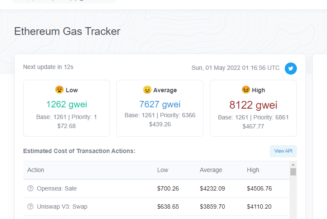
The data “will only reinforce the conclusion that price pressures are more persistent than previously expected,” Rubeela Farooqi, chief U.S. economist at High Frequency Economics, said in a note to clients before the report.
The cost increases, which are outpacing wage gains and turning Americans’ views on the economy sour, have sliced into Biden’s approval ratings and made the 2022 midterm elections even more challenging for Democrats. The hot reading on consumer prices, which followed a 6.2 percent jump in October, is also likely to fuel Republican criticism of Biden’s economic performance, which they have dubbed “Bidenflation.”
It could embolden conservative Democrats such as Sen. Joe Manchin of West Virginia to oppose the president’s $1.7 trillion Build Back Better package, which the party hopes will clear the Senate by Christmas. Biden will need every Democratic vote in the 50-50 Senate to pass the bill.
Manchin said earlier this week that his concern about inflation outweighs the benefits of Biden’s spending plan, which focuses on reducing costs for child care and health care and tackling climate change. The White House argues that over the long term, the bill would boost worker productivity and reduce inflation.
The administration is keenly aware of how much higher prices threaten Biden’s political ratings and make passage of his economic agenda in Congress more difficult. Biden on Thursday sought to pre-spin the numbers, saying that the November data wouldn’t reflect recent declines in key costs.
“Fortunately, in the weeks since the data for [Friday’s] inflation report was collected, energy prices have dropped,” Biden said in a prepared statement. He added that the CPI report “does not reflect today’s reality, and it does not reflect the expected price decreases in the weeks and months ahead, such as in the auto market.”
At the White House press briefing on Thursday, National Economic Council Director Brian Deese echoed these points and said many top economic forecasters see inflation falling quickly next year and coming closer to the Fed’s target of slightly over 2 percent per year for by the end of 2022.
Deese said the U.S. was “uniquely well-positioned” to deal with higher inflation, given a strong labor market, fast economic growth and higher household incomes and savings rates. He also pointed to recent drops in prices for gasoline, natural gas and used cars as signs that the overall inflation reading will drop in the coming months.
Many economists agree with the White House that inflation should ease next year, especially in the areas most noticed by voters: energy and food. Early reports that the Omicron variant of Covid-19 responds well to existing vaccines and is not more symptomatic than the Delta variant could also reduce fears of a slowdown in the expected full reopening of the economy.
Price increases in November were broad-based, the Labor Department said, much as they were October. Indices for gas, shelter, food, used cars and trucks, and new vehicles were among the larger contributors to the rise in prices. The so-called core consumer price reading, which excludes volatile food and energy prices, rose 0.5 percent in November, also down slightly from October’s 0.6 percent but still the fastest pace in three decades.
“Households are facing higher prices at every turn,” Greg McBride, chief financial analyst at Bankrate.com, wrote in a client note on Friday. “In the past year, staples like food, up 6.1 percent, energy, up 33.3 percent, and shelter, up at the fastest pace since 2007 at 3.5 percent, are putting a major squeeze on household budgets. Those three categories account for more than half of the weighting in the Consumer Price Index.”










